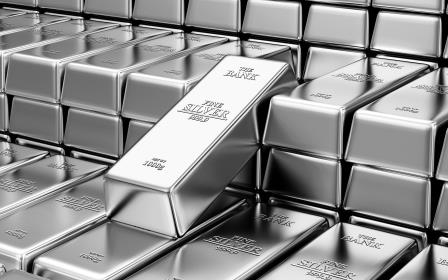
Supply and demand for non-investment use of silver is a showing distinctly positive sentiments, but traders are still staying away from taking fresh positions. Low turnover and volume of the metal being traded in exchange platforms also hints at feeble investor interest.
A strong dollar is keeping traders away from taking big bets on commodities like silver. A firm dollar makes commodities expensive for holders of other currencies. After the U.S administration imposed tariff on imports to U.S, the dollar strengthened and recently went up to its highest level since June 2017. The U.S Federal Reserve raised rates twice this year and prospects for more hikes are strengthening the U.S greenback.
Silver’s appeal as an investment avenue has dimmed, with the demand for investing in silver coin and bar contracting 27 percent last year. A strong global equity market and new investment elements such as crypto-currencies have curbed the demand for metals like silver.
Still, higher demand for silver is reported from the Electronic Vehicle and Solar Panel segment. Similarly, there is a demand for silver in making electrical components, brazing and alloys as well. Silver powder and pastes are now increasingly used for manufacturing the solar cells. Demand for the use in photovoltaic cell sharply increased due to strong solar panel uptake from China. China is the main contributor for growth with more than half of the world’s new solar panel installations last year. Since the global solar energy capacity is predicated to be triple by 2030, the demand for photovoltaic silver may be on the higher side even though the demand outlook from the top consumers, China, India and U.S are uncertain.
However, on the supply side, silver market recorded a deficit last year, the fifth consecutive year of deficit. Mine output throughout the globe posted a decline. Output from the top producer -, Peru and, China and Argentina reported a decline due to supply disruptions. On the Asian front, China, the top producer, accounting 13 percent of global mine production, shed two percent due to factors pertaining to environmental protection.
In the meantime, the gold-silver ratio, which indicates the quantity of silver required to buy gold, is now placed at 78. In the initial months of 2018, silver continued to lag behind gold with the ratio exceeding 80, which has happened only thrice in last two decades. Considerable change in this ratio suggests changes in the dynamics of the two commodities or either gold being overvalued or silver being undervalued.
Looking ahead, physical demand from the industrial and investment side would be imperative for setting prices. While the market anticipates U.S central bank to announce more rate hikes in 2018, a change in this sentiment will perhaps create further volatility in dollar and the commodity price. Anyhow, the immediate support of $13.60 an ounce would be critical for further downside.
Posted: July 2018